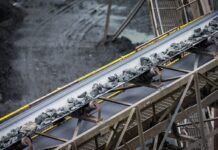
Researchers at RMIT University have developed a spray-on technology that can be used for repairing navy ships damaged by fire or missile attack.
The technology uses polymer developed in partnership with CSIRO that can be squirted onto damaged fibre composite surfaces to repair them within just 10 minutes, effectively allowing ships to repair themselves while at sea.
Lead researcher Professor Adrian Mouritz of RMIT University said the technology aims to prevent blazes like the one that destroyed HMAS Bundaberg, a $54 million navy patrol boat, in 2014.
“At the moment, if you damage a composite, whether it’s an aircraft, a naval ship, a wind turbine blade or anything, you need to take it out of service, so you can’t use it,” the Professor noted.
“You’ve got to cut out, or grind out the damaged area and then put new material in, and that’s a pretty slow and expensive way to do it.
“Our method allows you to do repairs immediately when the damage forms and it can heal itself in the same way that your body does.”
The research, which is funded by the Australian Department of Defence and the US Navy, ties in with Professor Mouritz’s other research on the effects of fire on ships made from fibre composites and also aluminium.
Mr Mouritz said that while both materials are lightweight and more economical, their sensitivity to high temperatures prompted him to launch a research into managing the fire risks of fibre composites.
“The work we’ve been doing with Defence is to develop models the navy can use to predict, if there is a fire on a ship, how long that fire can burn before it becomes a major safety hazard to the structural safety of the vessel,” he continued.
“It also allows them to get a better understanding of the fire protection measures needed to put on board a ship which is made out of either aluminium or composite materials.”
The Professor said experimental tests have led the team to create predictors used to save lives in ships as well as planes and buildings.
“We took that information and then developed models, which allow people to predict how these two groups of materials will weaken, and when they’ll fail in the event of fire,” Mr Mouritz explained.
“That sort of work has never been done before. These models that we’ve developed can be used not only for naval ships; they can be used if there’s a fire on an aircraft, or in a building.”




















